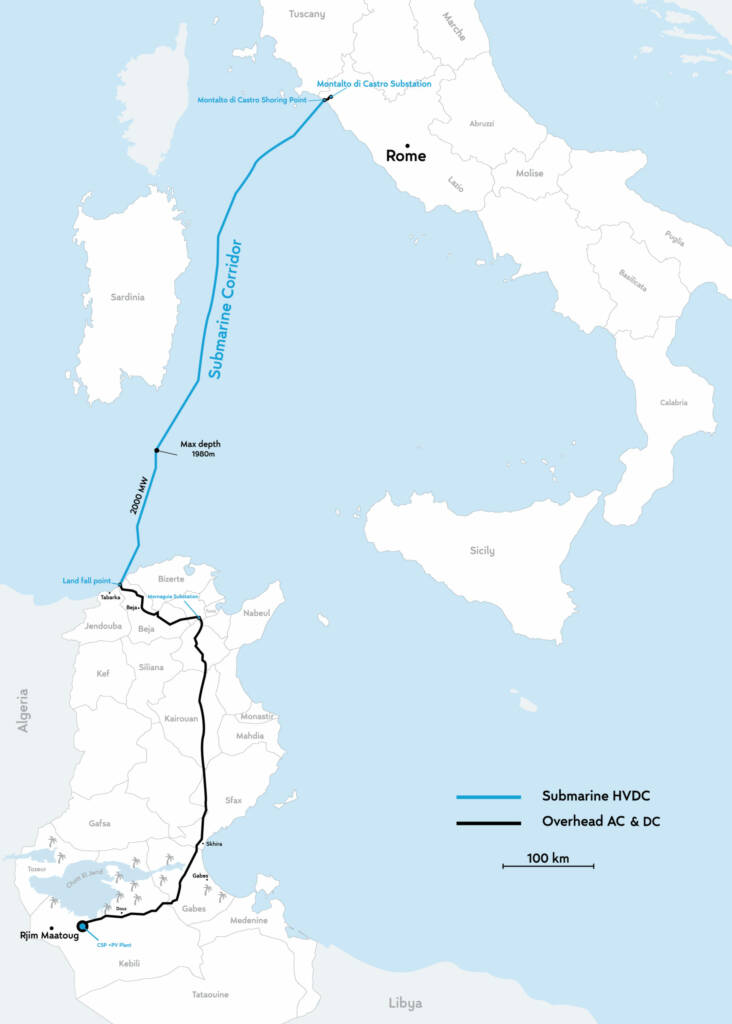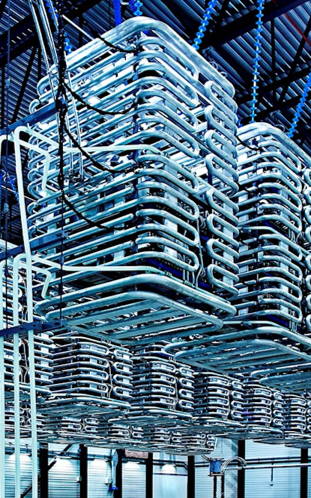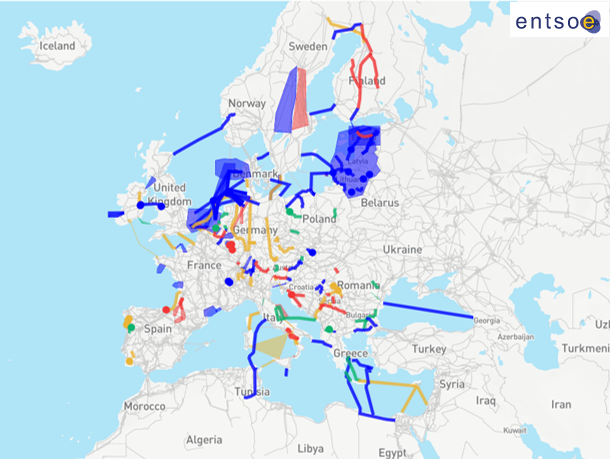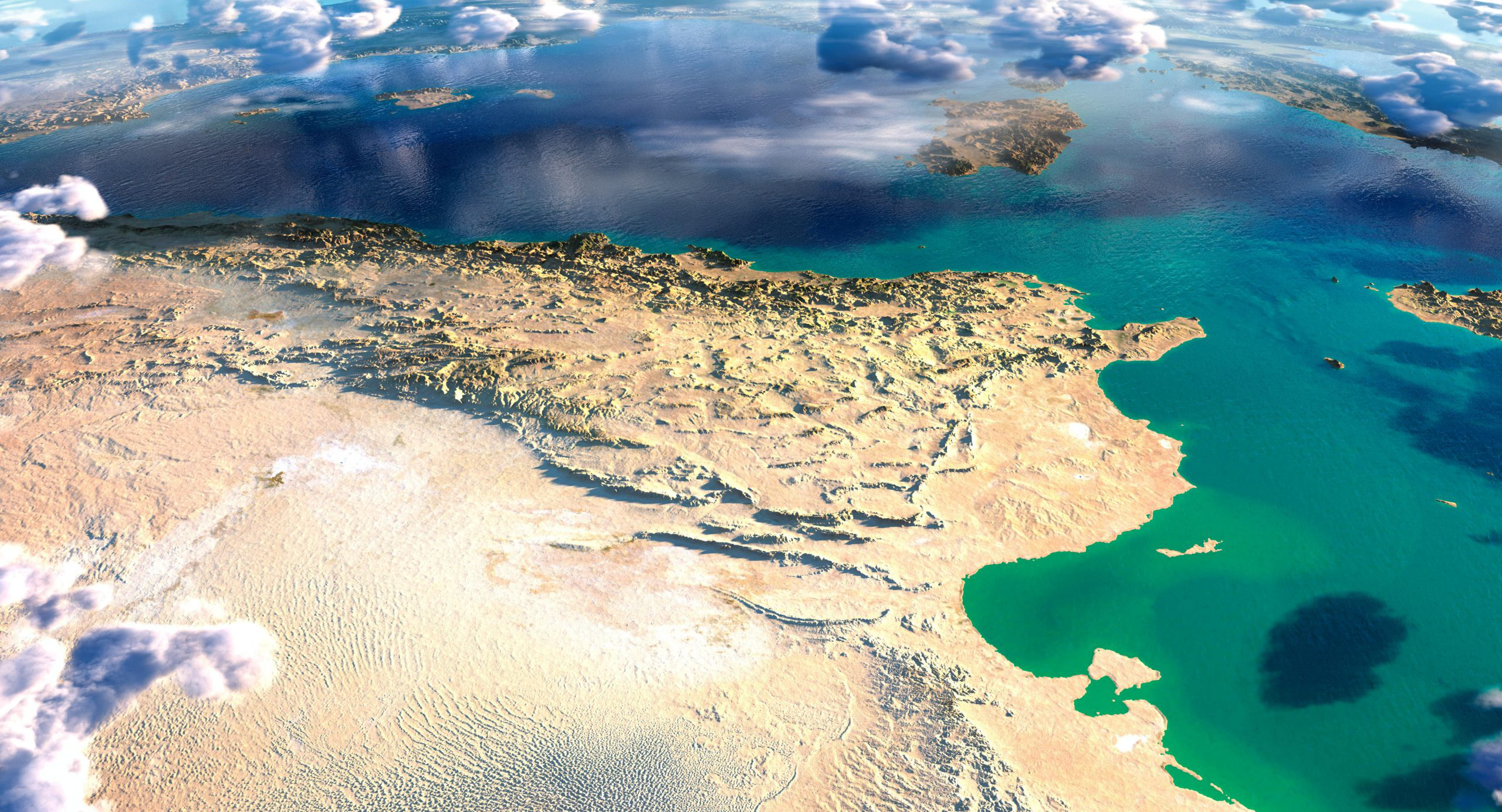About TuNur Italy
TuNur Italy is a 2,000MW transmission line purposefully built to deliver low-cost baseload solar power from TuNur’s hybrid solar facility in Southern Tunisia, to the heart of the European network from 2034.
TuNur’s hybrid renewable energy facility will be situated in the Tunisian desert where solar and wind resources are extremely high enabling the most efficient integration of renewable technologies with storage. The combination of these technologies enables the plant to produce low-cost solar power up to 24 hours a day 365 days a year.
To deliver the power to private buyers in Europe the TuNur Italy dedicated transmission line will connect the power plant to the European network via Terna’s HV network in Italy.
The transmission line is based on High Voltage Direct Current technology combining +/-525kV DC architecture and VSC (Voltage Source Control) HVDC converter technology. The project will consist of two independent 1,000MW bipolar systems providing a high reliability and efficiency of the transmission system.
HVDC technology is a key driver for increased cross border electricity transfer and renewable energy deployment. There is growing demand from Europe to enhance transmission and integration with neighbouring regions including North Africa.

Project in Numbers
The Route
The HVDC transmission line starts with the connection point to the power plant in Southern Tunisia and then runs North to a landfall point in Northern Tunisia before moving via submarine line to a landing point at Montalto di Castro, just north of Rome, in Italy. The transmission architecture is based on two independent VSC bipolar HVDC systems whereby each system has two transmission cables.
Tunisia
Submarine Route
Italy

Key Benefits
The TuNur Italy project will facilitate many benefits to Tunisia, Italy and Europe by enabling the investment in significant amounts of new renewable energy capacity capable of producing low-cost baseload zero carbon power.
The project will also generate significant investment, job creation and socio-economic development in Tunisia and the region.
Technology
HVDC technology is used to transfer a large amount of energy over long distances facilitating the transfer of electricity from high-capacity generation plants to the local networks where the energy is consumed.
HVDC transmission system presents many advantages for transiting large capacities over long distances including low losses, system reliability and flexibility. HVDC provides an economic solution for long distances with minimal low losses, suitability for underwater applications and ability to manage instabilities.
For this reason, HVDC technology is a key driver for increased cross border electricity interconnection and renewable energy deployment.
As of today, there are a large number of cross border HVDC projects ongoing in Europe and globally, for both on land and subsea applications.

TYNDP 2022
Following the inclusion of project in the TYNDP2020 under project number 283 the TuNur Italy was included also in the TYNDP2022 (see the following link: https://tyndp2022-project-platform.azurewebsites.net/projectsheets/transmission/283), the cost/benefit analysis carried out by the ENTSOE has shown that the TuNur project has generated significant benefits for the European network.
Recently, TuNur Italy application was accepted in the TYNDP 2024, the update of CBA results is ongoing by the EnTSO-E.



